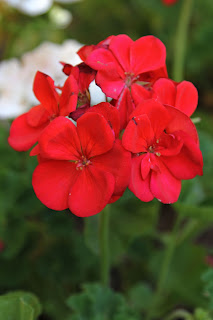I
had been at work only a short time when I received a telephone call from my
friend Basil, telling me that he had found a book (He has also been looking for the
Lost Dutchman Mine.) that gave directions to the “lost Lobo Mine” in the Spring
Mountains. According to Basil, some of the old buildings and parts
of the ore cart tracks at the "Lobo" Mine were still intact and worth visiting. I knew that this must be some type of
omen, since I just had a dream about an old lost mine. Basil said this would be
a great family adventure and suggested that on Saturday we take our families
and two vehicles on an outing to find the mine. I liked the idea of two
vehicles because I've been stranded in the desert before with two flat tires. When you have two vehicles traveling together, and something would happen to one of the vehicles, the other vehicle can be used to get back to civilization. We agreed to meet at 7:00 AM on Saturday.
Saturday
morning I was up early, read the paper, and was having breakfast when the
telephone rang. It was Basil, telling me that he wasn’t feeling well and he had
to cancel out on the trip. Bummer! I had really been looking forward to the
trip. After talking it over with my wife and daughter, we decided to find the
mine on our own, using Basil’s directions.
About
an hour out of town, we arrived at the described turnoff and I started looking
for the GPS unit, only to realize that I had left the GPS unit at home. Oh well, who
needs a GPS unit when you have a paper map!
After
traveling a short distance, it became obvious that we were not on the right trail.
Back to the highway and after a few more paved miles we found another turnoff
that looked better on the map. The only problem was that there were numerous
trails crisscrossing the desert that were not shown on the paper map! While
driving and simultaneously reading the map, I found myself going in circles and
ending up where I started. Finally, my daughter said that she could do a better
job of navigation and asked for the map. Now you have to realize that this is
the girl that couldn’t find her way around the block when she was in Junior
High School, but has somehow developed excellent map reading skills in
later years. Within a short time she found the correct trail and we headed for
the “lost mine.” Unfortujately, the trail soon disintegrated and turned out to be very rocky
and rutted, so travel toward the mine was at a very slow pace.
After
about an hour we had almost reached the mine when I heard a bang, then a flop,
flop. Getting out of the vehicle, it was just what I had expected – a rear flat
tire. Great! Where was Basil when I needed a second vehicle and some help! I
was hopeful that I had a spare tire because in the three years that I owned the
vehicle I had never had a flat tire. Crawling under the vehicle I located the
spare tire behind the rear bumper and it was even inflated. Good, so far! Now
the trick was to figure out how to find the jack/tire wrench; and, of course,
there was no owner’s manual in the glove compartment. Removing the rear cargo
mat I found a plastic cover that could removed without any tools and under the
cover was a jack and various other tools that looked like they could be used to
change a tire. The only problem was that there were no directions on how to get
the tire out from under the vehicle. After about 10 minutes, I finally located
a small space between the license plate and the bumper that appeared to be
large enough to fit part of the jack handle through and sure enough, I was able
to use the tool with the long handle to crank down the tire so that I could get
the tire out from under the vehicle. The rest of the tire change went
well.
After
I finished changing the tire, we walked the short distance to the old mine
operation. It wasn’t quite like Basil had described, but it was still
interesting. After taking some pictures, we headed back to the highway and
arrived back at home without any further incidents. Now to have a chat with
Basil!
Miner's Cabin
View of cabin from storage shed
Relaxing on the front porch
Mine Entrance
Ore cart tracks to tailings dump
Joshua Tree




























































